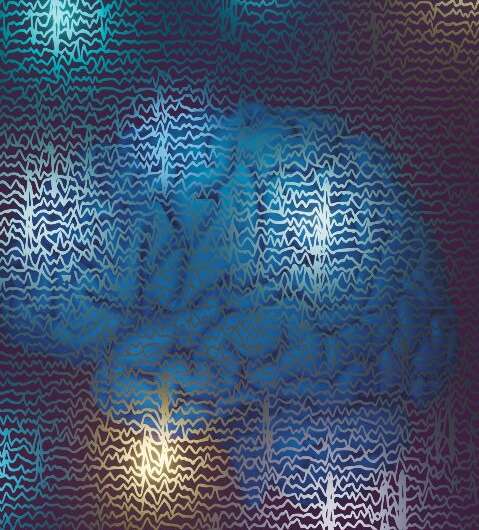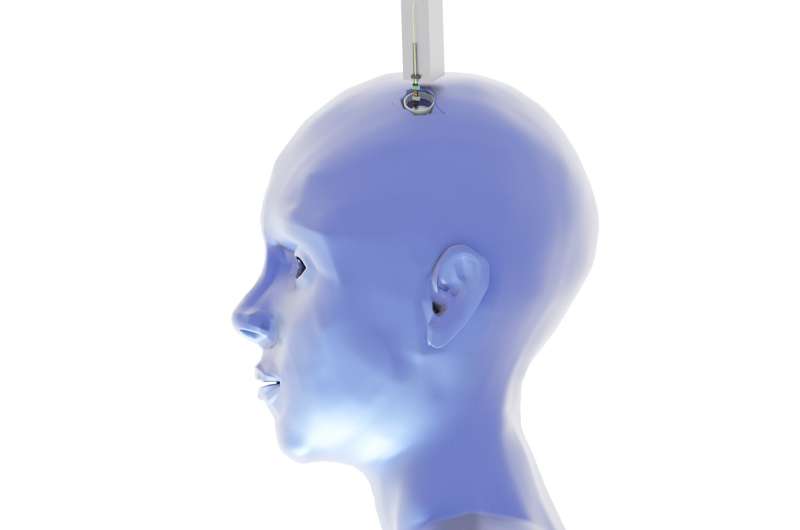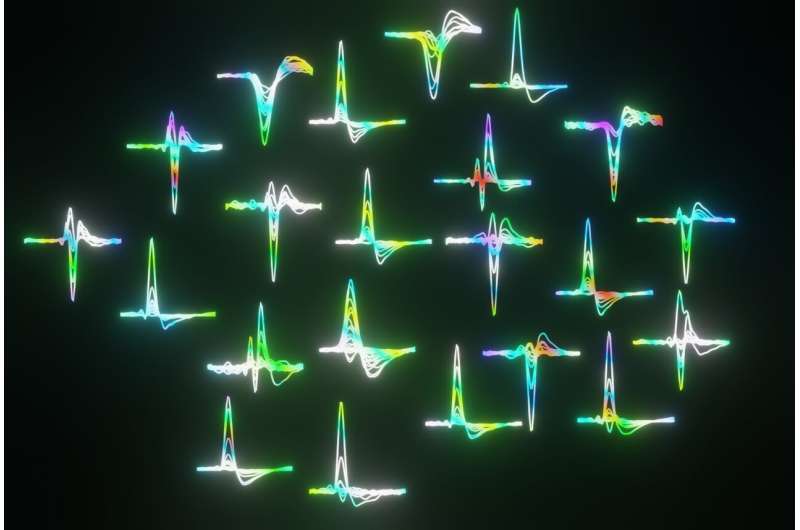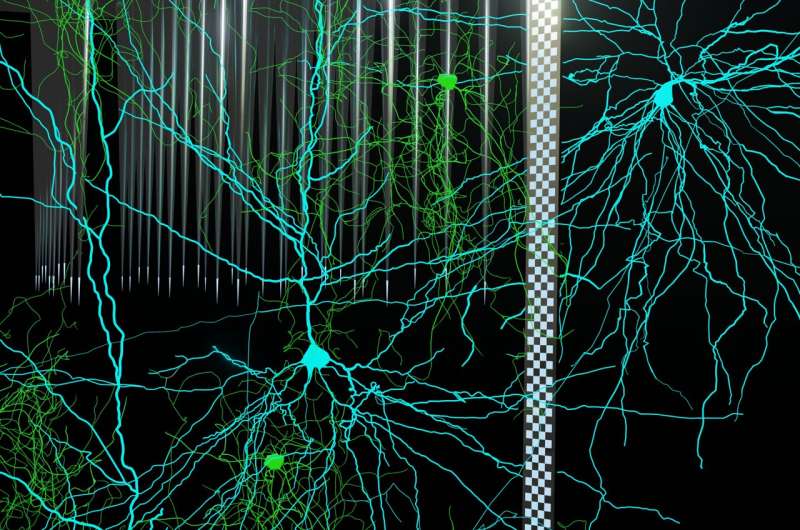March 18, 2022 feature
New protocols to record neural activity using Neuropixels in clinical settings

To examine the human brain and better understand its functions, neuroscientists have so far used a variety of methods to record the electrical activity of brain cells. Traditionally, these methods were either able to record the activity of a few individual neurons at a time or monitor changes in the summated activity of thousands of neurons over time. If researchers wanted to sample from a large population of cells in one area at once, however, they had to employ two or more different techniques.
In 2017, a team led by Tim Harris at HHMI Janelia Research Campus introduced the idea of Neuropixels, a ground-breaking technology that can simultaneously record the neural activity of hundreds to thousands of individual neurons and ongoing changes in focal areas of the brain. This powerful technology, which was subsequently designed and fabricated by IMEC, is now bringing huge innovation in the field of neuroscience.
Researchers at Massachusetts General Hospital, Harvard Medical School, and other medical institutes in the United States have recently carried out a study aimed at examining and potentially overcoming some of the challenges that might prevent the large-scale implementation of Neuropixels in clinical settings. Their paper, published in Nature Neuroscience, introduces new protocols and techniques that can be used by doctors and neuroscientists to record more than 200 well-isolated cortical single units in a focal region in humans who are undergoing neurosurgical procedures.
"The Neuropixels technology provides a powerful high-resolution dynamic 'movie' of ongoing electrical dynamics of neural activity which we previously did not have access to," Angelique Paulk, one of the researchers who carried out the study, told Medical Xpress. "The goal of our study was to detail the technical obstacles in bringing this device into the human operating room to record neural activity in the intact human brain using the Neuropixels probe."
In addition to identifying some of the technical difficulties preventing the use of Neuropixels within human operating rooms, Paulk and her colleagues wanted to devise a blueprint that both clinicians and neuroscience researchers could follow to overcome these difficulties. The techniques and protocols described in their paper were thus also shared on DRYAD, a renowned public repository for educators and researchers.
The team that carried out the study included both practicing clinicians and neuroscientists. In collaboration, the researchers were able to devise two protocols for recording activity in the human brain using the Neuropixels probe. They then tested these protocols on consenting patients who were undergoing neurosurgical procedures.

"The implementation and use of the Neuropixels probe in the operating room required that we use a newly-developed thicker probe produced by IMEC (the company that produces Neuropixels), that we establish validated sterilization pipelines and maintain sterile handling practices, and that we surmount the highly electrically noisy environment in the operating room through careful referencing of the devices," Paulk explained. "Following informed consent by the participants, we found the result was incredible in that, in one case, we were able to record from 202 individually identifiable neurons in the human cortex using a single Neuropixels probe."

The results that Paulk and her colleagues achieved when following their protocols are highly promising, as other existing technologies to collect single cell recordings using microelectrodes only allow researchers to record up to 100 cells at a time, using 96 electrodes and capturing activity at a significantly lower spatial resolution. This is approximately half of the cells that they recorded using Neuropixels.
"We hope that our transparent paper that includes lessons learned will pave the way towards an exciting new era for understanding cognition, basic neuroscience of the human brain, and neuropsychiatric pathologies to improve clinical care practices," Paulk said. "A major challenge in human neuroscience is that we do not always have the mechanistic information of what brain cells contribute to different functions or pathologies. Neuropixels offers a way to individually identify cells and their subtypes through high resolution sampling that we simply did not have access to in the past."

In the future, the new protocols introduced by Paulk and her colleagues could facilitate the use of the Neuropixels technology in clinical settings, enabling the collection of more detailed and reliable neural recordings. In addition, the researchers hope that their work will inspire new open science and open data initiatives aimed at further advancing our current understanding of the brain.
More information: Angelique C. Paulk et al, Large-scale neural recordings with single neuron resolution using Neuropixels probes in human cortex, Nature Neuroscience (2022). DOI: 10.1038/s41593-021-00997-0
© 2022 Science X Network


















